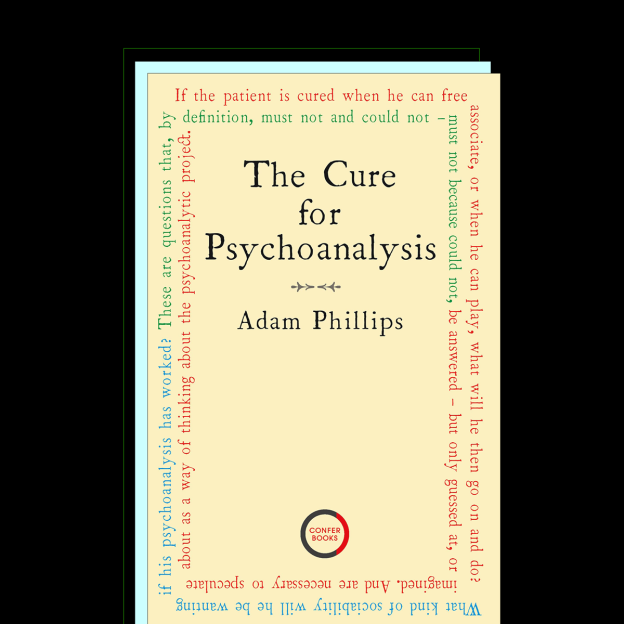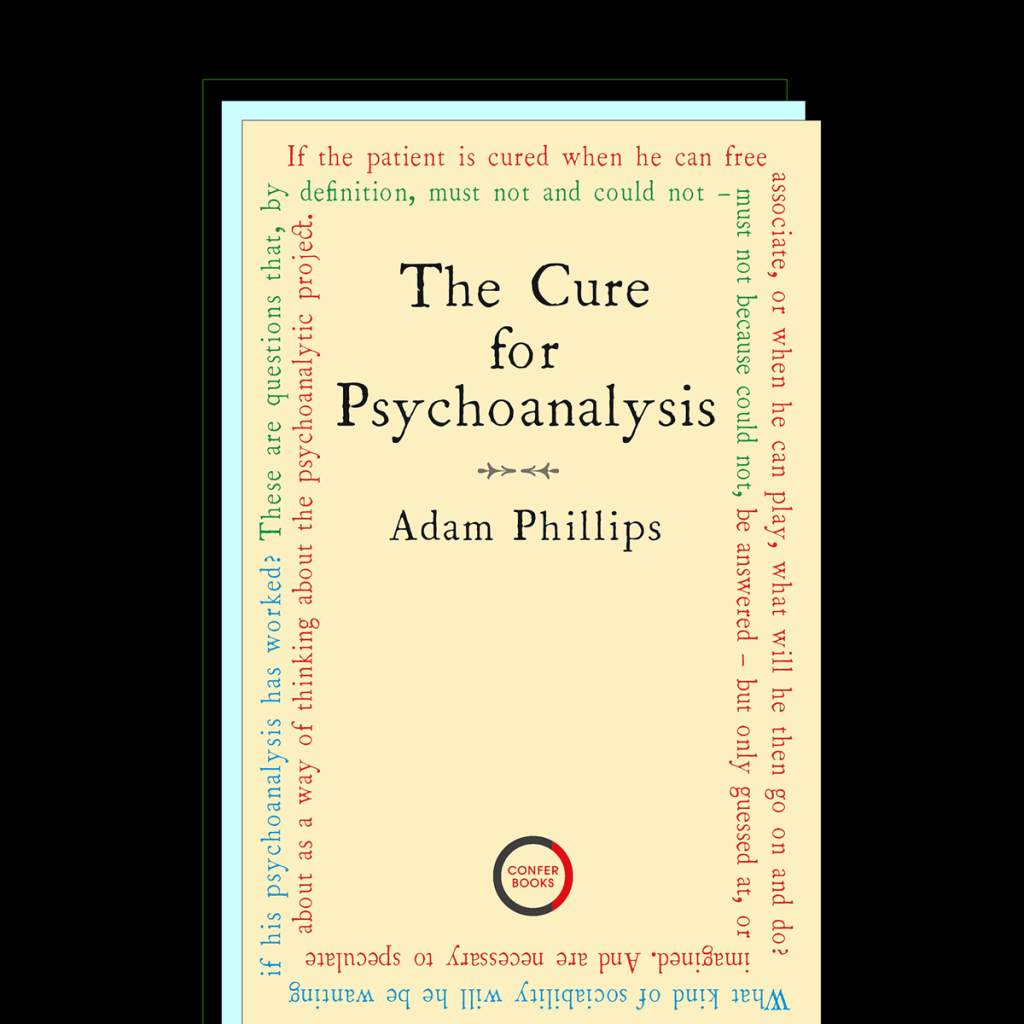
The Cure for Psychoanalysis — Adam Phillips
by
Psychoanalytic writing is boring. It takes a lot of effort to make it so dull, because what psychoanalysts and their clients do is “amazingly interesting.” Adam Phillips’ book isn’t boring, and it takes no effort to read at all. Perhaps that’s because it isn’t “writing.” Perhaps it’s because The Cure for Psychoanalysis is as much a philosophy of life as a book about psychoanalysis. It’s probably also because it isn’t theoretical; the lay person can pick up this book and grasp its content—there’s no banging your head against unexplained technical jargon or impenetrable analytic language. It’s a short book, a book based on a day, which you can read in an afternoon, and be all the better for it (if not cured). The Cure for Psychoanalysis is for anyone interested in the psychoanalytic process, and how that process proceeds from a place of openness. It’s this open-endedness that gives the book the feeling of being alive, and the feeling of being a part of a group psychotherapeutic process through the medium of the written word.
Technically, The Cure for Psychoanalysis isn’t writing at all. The book is based around a morning presentation by Phillips, and an afternoon interview with his friend Ed Corrigan. These two varieties of spoken dialogue are followed by the participants’ questions and answers, which altogether breathe life into the written record of a workshop, making you feel like you missed something, and yet you didn’t. The only “writing” in the book is the final essay by Phillips, and the several written responses to the workshop (which took place in New York, at The Institute for Contemporary Psychotherapy in March 2018) along with a superb coda by the institute’s director, Holly Levenkron.
As a reviewer it can be tempting to read the front and back covers of a book, check the contents, skim the introduction, and, “hey presto,” there’s your thousand words. This book doesn’t allow you to do that—it takes you into the lifework of Adam Phillips, and reveals genuine surprises in the context of a day-long workshop. The morning presentation could effectively be called “how to read Winnicott’s Playing and Reality,” first published in 1971. Following Winnicott, Phillips advocates the nurturing of creativity through play as a means to “cure.” I’ve never read Winnicott, but after putting The Cure for Psychoanalysis down, I want to. Phillips’ references to play throughout the text reminded me of the work Homo Ludens: A Study of the Play-Element in Culture by the Dutch cultural historian Johan Huizinga, published in 1955. This may be a simple association or synchronicity. I’m not a psychoanalyst, I’m a student of philosophy, religion, and culture, with a long running interest in psychoanalysis, but Homo Ludens sits beside me on my desk as I write this review, and I’d be surprised if Winnicott hadn’t come across it in the ‘60s.
I think that’s also why this book struck a chord with me—it read more like philosophy as a way of life than psychoanalytic theory. As you leaf through the pages, you are touched by someone who has been in touch with life in many forms, and who has been formed through relations with that life, and who in turn forms words from a place of openness and not-knowing. Phillips is skillful in the way he turns closed positions into open explorations, “theories of the self” become “who are you sat before me? You and I, both of whom, I do not know.” I hear an old tradition here, a dialogical tradition that reaches back to the pagan Greek world when a man wandered around an agora asking questions because he was supposed to be wise, but he himself didn’t know anything. Such a position can be both anxiety-inducing and liberating—talking about it can help, and talking about talking about it is “amazingly interesting.”
I’ll end with some magic of my own by opening the book at random. I see marginalia in pencil: “ongoing discovery not meeting of needs, i.e., transactions.” A little further down, “anxiety of wanting,” followed by “anxiety of open-endedness,” closely followed by “discovery of one’s own vision.” This “random” selection from page seventy-four of the book is one of many that could have opened before me. Here, and throughout, Phillips presents a relational position suggesting a shift from fixed exchange to the openness of not-knowing—from the covering-over of anxiety with the proliferation of resources which are supposed to fulfill your desires, to an inquiry into those desires, as to whether they are really yours, or someone else’s. This is one of the many possible adventures on which the psychoanalytic dialogue can take you. I’ve always thought of analysis as going on an adventure, something I was pleased to hear Phillips say too. The object of desire then becomes something which we move towards, while knowing it may not be what we want when we get nearer to it, or that we may find something completely different on that same journey towards it. The beauty of life, the good life, may be in the mazy meandering towards a vision of one’s own—”like thinking, the reason you have a destination is so that you can take a wrong turn.” And these wrong turns are the magic, the play of life; play, according to Winnicott, being the cure (that isn’t a cure) of, and for, psychoanalysis. I could say much more, but I’ll let the magic of the book surprise you too.
OLIVER THORNE reviewer
Oliver Thorne is an independent scholar, philosophy consultant, and meditation coach, with wide ranging interests from yoga, tantra, and alchemy, to psychoanalysis, existentialism, and philosophy as a way of life. He received his Ph.D. in religious studies from Lancaster University in 2019, and is currently a research supervisor and teaching consultant for the New School of Psychotherapy and Counselling in London. A recognized teacher of Gitananda Yoga, and third degree black belt in Aikido, he is passionate about combining scholarly work with bodily practices of transformation.

Phillips, Adam. The Cure for Psychoanalysis: A Day with Adam Phillips at The Institute for Contemporary Psychotherapy. Confer Books, 2021.
© Copyright for all texts published in Stillpoint Magazine are held by the authors thereof, and for all visual artworks by the visual artists thereof, effective from the year of publication. Stillpoint Magazine holds copyright to all additional images, branding, design and supplementary texts across stillpointmag.org as well as in additional social media profiles, digital platforms and print materials. All rights reserved.